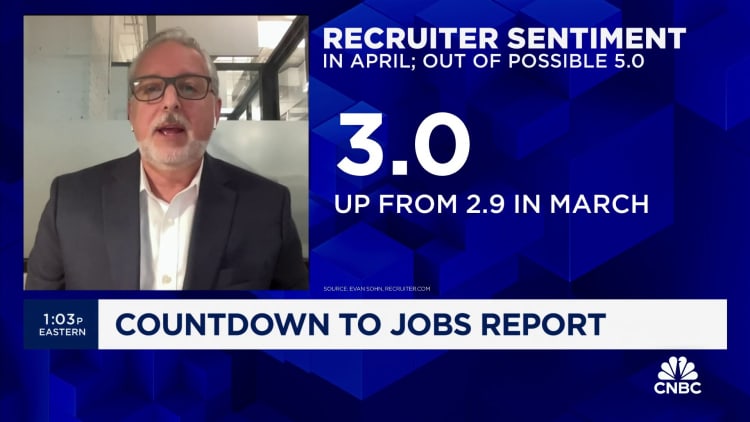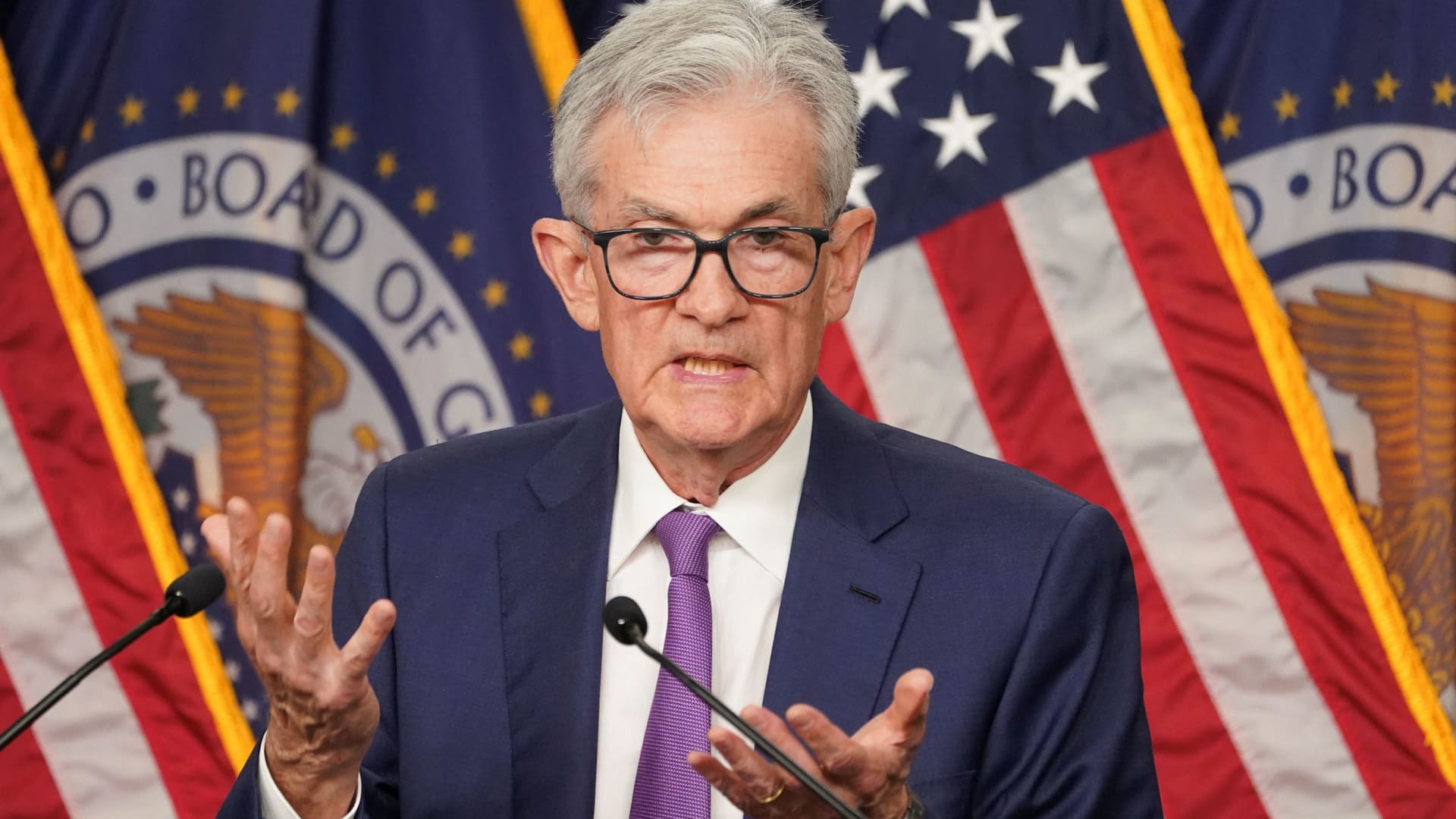Nonfarm payrolls are expected to show a gain of 240,000 for the month, according to the Dow Jones consensus that also sees the unemployment rate holding steady at 3.8%. The labor market has been full of surprises this year, topping Wall Street estimates at a time when many economists expected hiring to have slowed down. Markets also will be closely watching the wage numbers. A jobseeker takes a flyer at a job fair at Brunswick Community College in Bolivia, North Carolina, on April 11, 2024. Allison Joyce | Bloomberg | Getty Images
Hiring likely continued at a brisk pace in April as investors look for any cracks in the labor market that could sway the Federal Reserve.
Nonfarm payrolls are expected to show a gain of 240,000 for the month, according to the Dow Jones consensus that also sees the unemployment rate holding steady at 3.8%.
If that top-line number is accurate, it actually would reflect a small step back from the average 276,000 jobs a month created so far in 2024. In addition, such growth could add to the Fed’s reluctance to lower interest rates, with the labor market humming along and inflation still above the central bank’s 2% target.
“There are definitely still tailwinds left,” said Amy Glaser, senior vice president of business operations at job staffing site Adecco. “For April, the name of the game is steady-Eddie as resiliency continues, and then we’re looking forward to some of the seasonal trends we would expect going into the summer.”
April’s jobs market featured more strength in health care and leisure and hospitality, Glaser added. Those have been two of the major sectors for employment growth this year, with health care adding about 240,000 jobs so far and leisure and hospitality contributing 89,000 jobs.
However, growth in the coming months could spread to areas such as education, manufacturing and warehousing, part of the usual seasonal trends as educators look for alternative employment in the summer and students head out seeking jobs, she said.
“I don’t expect to see major surprises this month based on what I’m seeing on the ground,” Glaser said. “But we’ve been surprised before.”
Beating expectations
Indeed, the labor market has been full of surprises this year, topping Wall Street estimates at a time when





